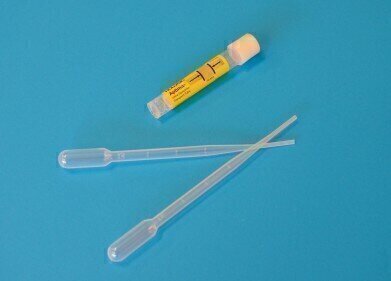Electrophoretic Separations
Blue-fluorescent molecular nanocapsules provide accuracy and sustainability
Jul 17 2012
New blue-fluorescent molecular nanocapsules have been created which provide both accuracy and sustainability.
Michito Yoshizawa, Zhiou Li and collaborators at Tokyo Institute of Technology have created new blue-fluorescent molecular nanocapsules using environmentally friendly and inexpensive zinc and copper ions. Additionally, the nanocapsules emit blue fluorescence with 80 per cent efficiency, which is a sharp contrast to previous molecular capsules and cages composed of precious metal ions such as palladium and platinum.
Molecular nanocapsules have been poised for use as photo-functional compounds and materials, but until now they have exhibited poor fluorescence making them unsuitable for these applications. However, Tokyo Tech researchers believe they can change this, and expect to be able to prepare multicolor fluorescence composites by the simple insertion of appropriate fluorescent molecules into the isolated cavity of the nanocapsules.
Fluorescence plays a number of roles in research laboratories, and has helped researchers understand issues in the fundamental sciences and develop practical materials and devices.
Capsule-shaped molecular architectures have been cited as being one of the most promising areas of development in this field as they possess both strong fluorescent properties and a nanometer-sized cavity. Additionally, they can be prepared through a simple synthetic process called coordinative self-assembly.
Now, researchers from Tokyo Tech have managed to overcome the problems caused by precious metal ions such as palladium and platinum by creating novel molecular nanocapsules with the M2L4 composition. Their zinc and copper capsules, in particular, display unique fluorescent properties.
The M2L4 capsules self-assemble from two metal ions and four bent ligands that include anthracene fluorophores (fluorescent parts). The closed shell structures are shielded by eight anthracene panels.
Researchers found that the zinc capsule emitted strong blue fluorescence with a high quantum yield (80 per cent). This is the first study to show such emissive properties of molecular capsules bearing an isolated large cavity. The researchers believe their nanocapsules could have novel applications in devices such as chemosensors, biological probes, and light-emitting diodes.
Posted by Ben Evans
Digital Edition
Chromatography Today - Buyers' Guide 2022
October 2023
In This Edition Modern & Practical Applications - Accelerating ADC Development with Mass Spectrometry - Implementing High-Resolution Ion Mobility into Peptide Mapping Workflows Chromatogr...
View all digital editions
Events
ACS National Meeting - Fall 2024
Aug 18 2024 Denver, CO, USA
Sep 04 2024 Chiba, Tokyo, Japan
Sep 04 2024 University of Warwick, Coventry, UK
Sep 10 2024 Rockville, MD, USA
Plastics Recycling World Expo Europe
Sep 11 2024 Brussels, Belgium














